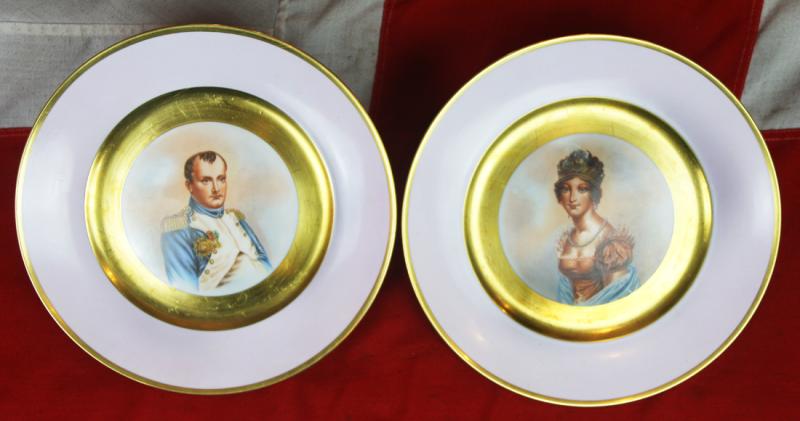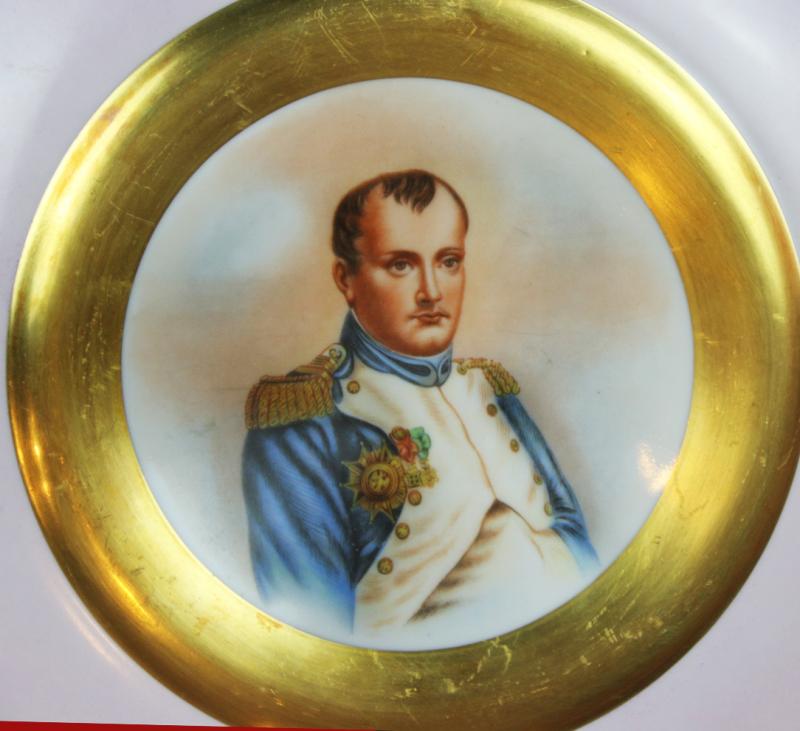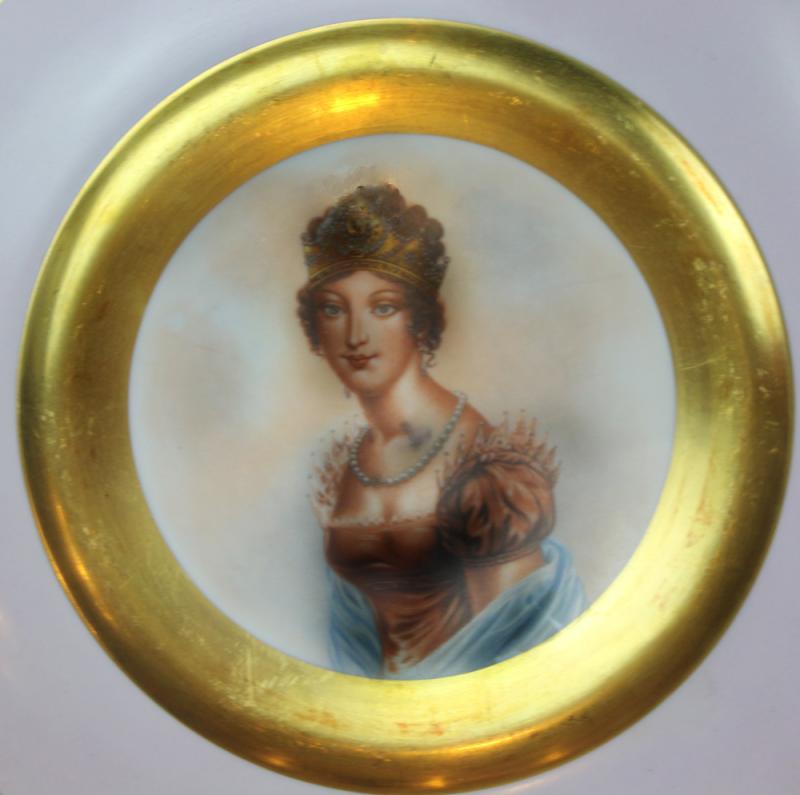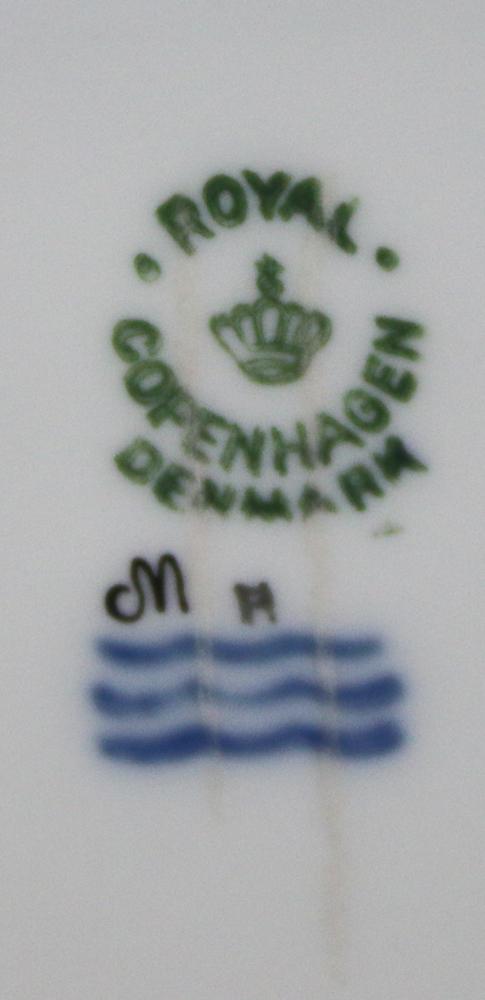A Fine & Beautiful Pair of Porcelain Cabinet Plates of Emperor Napoleon & Empress Josephine, From the World Renowned Porcelain Factory of Royal Copenhagen.
Finest porcelain dished plates bearing fine portraits of the emperor and empress of France, decorated with deluxe finest brushed pure gold borders. Makers mark to each dish. Slight original glaze wear within Josephine’s hair style.
Marie Josèphe Rose Tascher de La Pagerie was born in 1763 in Martinique to a wealthy white Creole family that owned a sugarcane plantation. In 1779, she married Alexandre de Beauharnais, with whom she had two children. The marriage was not a happy one, leading to a court-ordered separation. In 1794, during the Reign of Terror, Alexandre was executed but Josephine was freed thanks to the fall and execution of Robespierre.
Josephine met Napoleon, six years her junior, in 1795. Napoleon was enamored with Josephine, with whom he had a passionate affair. In January 1796, Bonaparte proposed to Josephine and they married in March. Until meeting Bonaparte, Josephine was known as Rose, but Bonaparte preferred to call her Josephine, the name she adopted from then on.
The marriage was not well received by Napoleon’s family, who were shocked that he had married an older widow with two children. Two days after the wedding, Bonaparte left to lead the French army in Italy. During their separation he sent her many love letters, but both spouses also had lovers. Despite his own affairs, their relationship was never the same after he learnt about hers.
The coronation ceremony, officiated by Pope Pius VII, took place at Notre Dame de Paris in December 1804. Following prearranged protocol, Napoleon first crowned himself, then put the crown on Josephine’s head, proclaiming her empress.
When after a few years it became clear Josephine could not have a child, Napoleon, though he still loved his wife, began to think seriously about the possibility of divorce and created lists of eligible princesses. In November 1809, he let Josephine know that in the interest of France he must find a wife who could produce an heir. Despite her anger, Josephine agreed to the divorce so the Emperor could remarry in the hope of having an heir.
Despite his divorce from Josephine, he showed his dedication to her for the rest of his life. When he heard the news of her death while on exile in Elba, he locked himself in his room and would not come out for two days. Her name would also be his final word on his deathbed in 1821.
Juliane Marie was known as a modern queen and a strong supporter of the country. It was the task of the reigning monarch to safeguard the country’s economic health with the development of domestic products and services. Her greatest legacy was founding the Royal Danish Porcelain Factor y in 1775.The production of porcelain was not entirely unknown to Juliane Marie. Her brother, Charles I of Brunswick-Wolfenbüttel had also founded a porcelain factory in Fürstenberg, Germany. In addition, their sister was married to Frederik II of Prussia, one of Europe’s absolute monarchs who in 1763 founded a porcelain factory in Berlin. Although the siblings corresponded, the secret for porcelain manufacturing was not shared between them and it was only in 1774 that porcelain was first produced in Copenhagen. Finally, Juliane Marie and the Danish royal family had their own valuable porcelain production, like other European monarchies.
THE ROYAL CROWN AND THE THREE WAVES
Juliane Marie was adamant from the start that each piece of Royal Copenhagen porcelain would be stamped with its unique factory mark: the three hand-painted waves that symbolise Denmark’s waterways, the ‘Oresund’ or Sound, the Great Belt and the Little Belt. The queen also introduced the royal crown stamp to highlight the factory’s royal association. The crown has changed over time and can be used to date each piece of Royal Copenhagen.
In the 1700's, it was good diplomatic practice amongst royalty and aristocracy to give fine porcelain as gifts. Following Danish defeat at the Battle of Copenhagen in 1801, Lord Nelson bought Royal Copenhagen porcelain for his beloved Lady Hamilton. The Danes lost the battle. But a love of Danish porcelain was victorious.
273mm wide
Code: 24588





